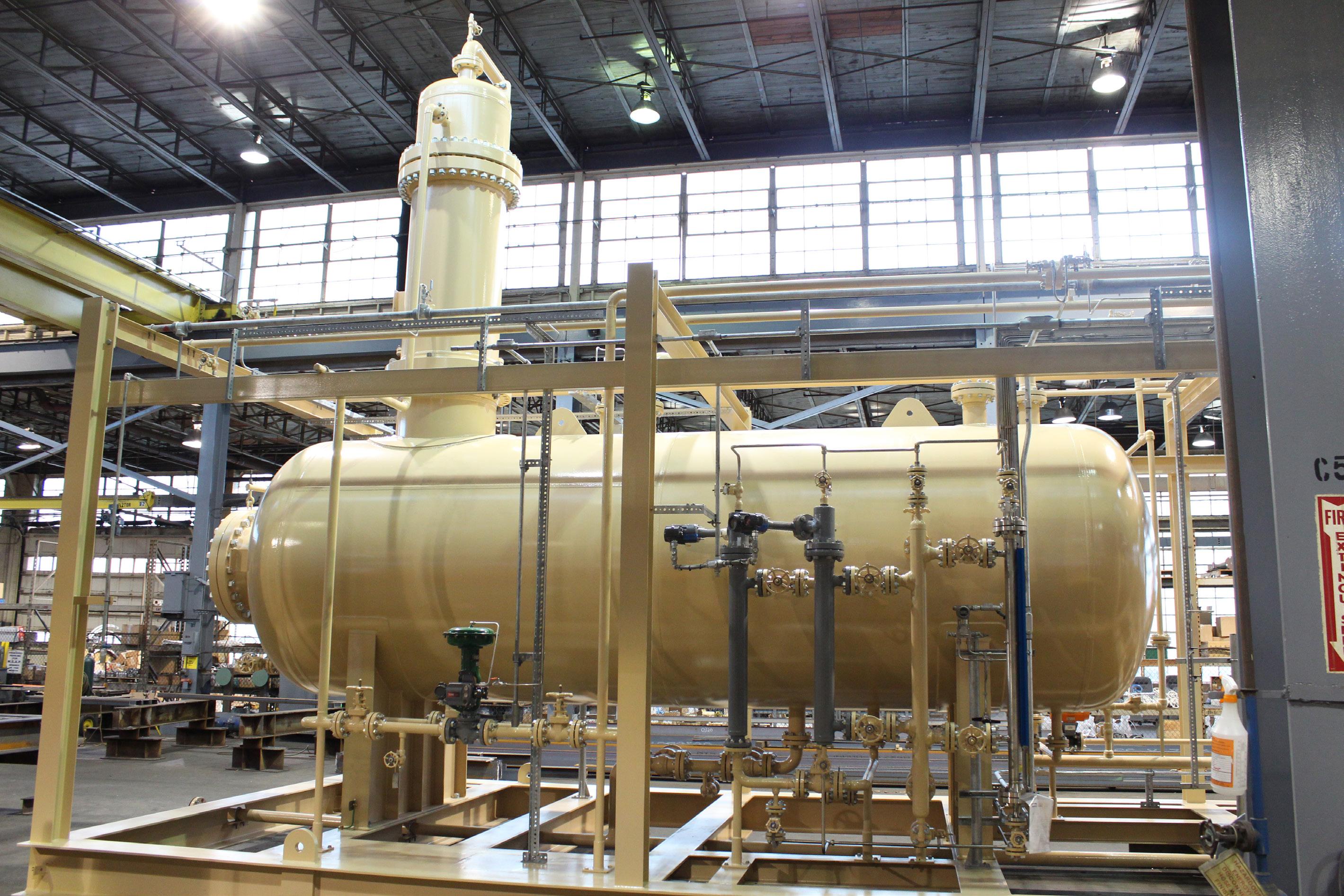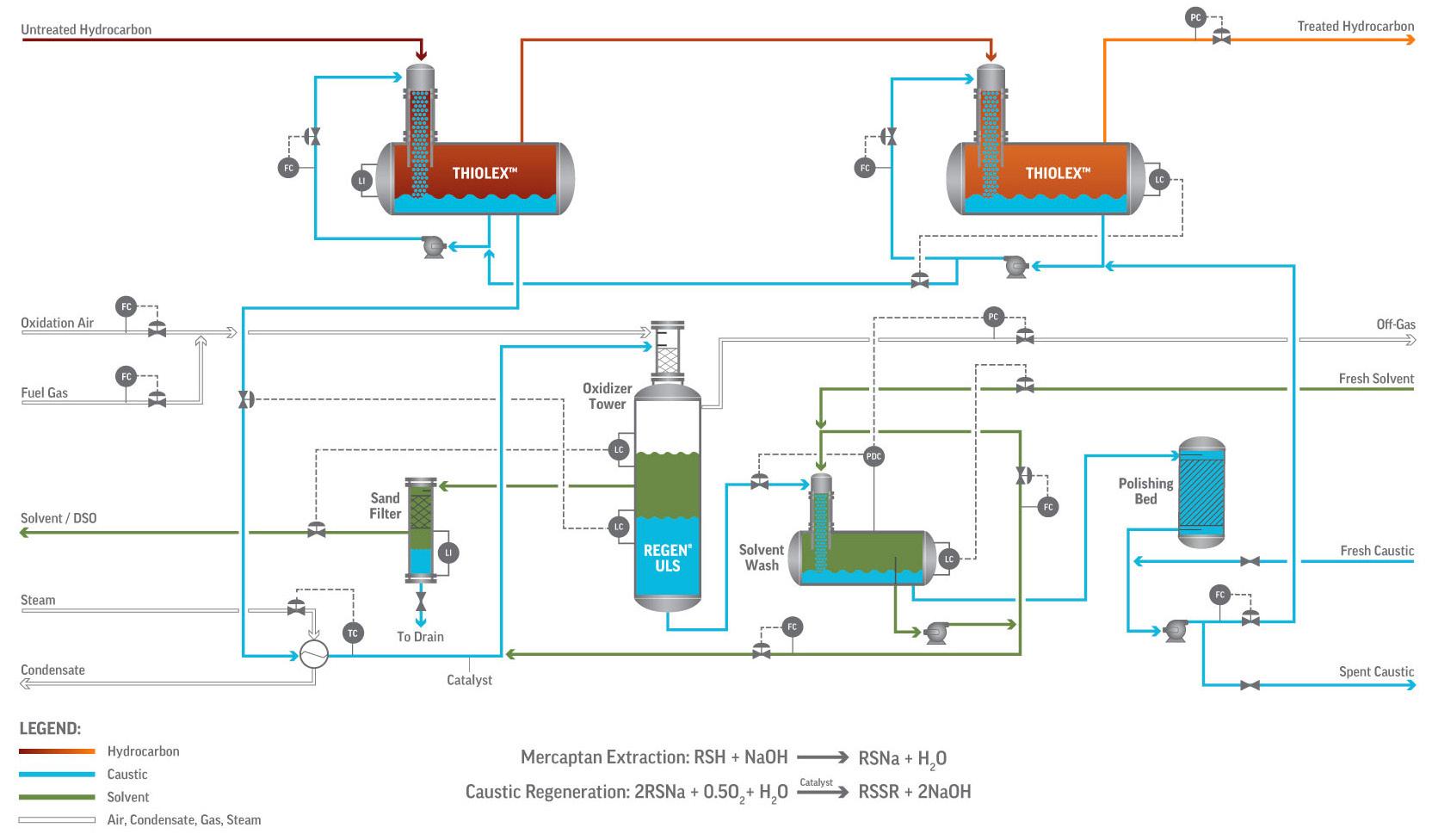
7 minute read
The sulfur level challenge
Richard G. Stambaugh, Merichem Company,
USA, discusses the available technologies for lowering refineries’ sulfur emissions in order to meet tightening regulations.
Among the 1.4 billion vehicles that are currently on the roads worldwide, more than 23 million use LPG or propane autogas as a fuel source. It is the third most common engine fuel behind gasoline and diesel, and the most popular alternative fuel globally.
An environmentally-friendly fuel that is prevalent among fleet and public transportation, LPG produces 99% fewer particulate emissions than gasoline and diesel. It also produces 10 – 15% less CO2 and releases 50 – 60% less NO2 and other hydrocarbons into the atmosphere. Because the fuel systems of LPG vehicles are tightly sealed, there are no evaporative emissions while running or parked. Additionally, they do not significantly contribute to acid rain because of low sulfur content.
Chemically, LPG is a mixture of propane and butane hydrocarbons that change to a liquid state at the moderately high pressures found in an LPG vehicle’s fuel tank. It is formed naturally, interspersed with deposits of petroleum and natural gas.
Natural gas contains LPG, water vapour and other impurities that must be removed before being transported in pipelines as a saleable product. Approximately 55% of the LPG processed in the US is from natural gas purification. The other 45% comes from crude oil refining.
There have been recent changes in US fuel standards complying with US Environmental Protection Agency (EPA) Tier 3, which is part of a comprehensive approach to reducing the impacts of motor vehicles on air quality and public health. It has forced many refiners to address their compliance methodology for fuel sulfur levels.
Merichem Company provides a new approach to lowering the total sulfur in the LPG product stream. Its THIOLEX® RSH® removal system achieves product sulfur specification of less than 3 ppmw.
Challenge
A major refinery in Midwest US (Padd II) was producing a high volume of finished products, including gasoline, with a throughput capacity of approximately 170 000 barrels per stream day (bpsd). Refinery personnel were evaluating capital scope options and requirements for manufacturing gasoline with 10 ppm sulfur to meet the EPA Tier 3 regulations.
They determined that the total sulfur content of their butane/butylene (BB) stream would need to be maintained at less than 10 ppm. To allow for inert sulfur compounds already present in the hydrocarbon feeds, the sum of unextracted acidic sulfur and back-extracted disulfide oil (DSO) would need to be even lower – 3 ppm or less.
The untreated BB stream had a design throughput of 13 000 bpsd and total mercaptans (RSH) of 222 ppmw as sulfur. While it is relatively easy to reduce extractable RSH in the product to 1 – 2 ppm as sulfur, one of the greatest challenges in caustic treating is preventing the resulting DSO from returning to the hydrocarbon feed. The DSO is typically both entrained and dissolved in the oxidised caustic. The colloquial term for the DSO which returns to the treated hydrocarbon is ‘re-entry sulfur’ or ‘back extraction’.
The technical solution
Caustic treatments remove acidic sulfur species from LPG. The alkaline pH of the caustic solution reacts with the sulfur species – most notably, RSH – to form water-soluble, ionic compounds that preferentially move into the caustic phase.
Once separated from the hydrocarbon phase, the aqueous sodium mercaptides are sent to an oxidative regeneration unit where heat, oxygen and catalyst are introduced. The mercaptides react with the oxygen to form mostly insoluble
DSOs which are then removed from the caustic. The regenerated – or lean – caustic is then returned to interact with the hydrocarbon once more, extracting more acidic sulfur species.
To achieve the ultra-low-sulfur (ULS) requirements of the refinery, Merichem Company introduced its REGEN® ULS technology, which significantly reduces DSO back extraction to achieve total sulfur product specifications below 10 ppmw. This new technology combines two separate existing technologies in such a way as to force the DSO to separate more completely from the regenerated caustic compared to a traditional REGEN® system.
The company paired a REGEN ULS that was specially designed for the refinery, with its high-efficiency RSH-removal system, called THIOLEX. The hydrocarbon stream is treated in the THIOLEX system using lean caustic from the REGEN ULS.
THIOLEX technology utilises caustic soda as the treating reagent to remove acid gas and RSH compounds from liquid hydrocarbon streams. The technology is used with Merichem Company’s FIBER FILM® Contactor, a retaining cylinder packed with very fine, proprietary metal fibres. The large interfacial surface area, microscopic diffusion distance, and continuous renewal of the aqueous phase are combined to yield superior mass transfer efficiencies. Because the aqueous phase adheres to the fibres in the FIBER FILM Contactor rather than being dispersed into the hydrocarbon phase, aqueous carryover is virtually eliminated.
The mercaptide-rich caustic is directed to the REGEN ULS system, where it is oxidised on a fixed catalyst bed. The resulting DSO is then removed from the caustic using bulk phase separation and decanting; solvent washing; and adsorption on a fixed bed to yield the ULS lean caustic that is recirculated to the THIOLEX unit for continuous treating. The technology super-regenerates the mercaptide-rich caustic and returns a lean caustic that is almost free of DSO.

Figure 1. A typical single-stage FIBER FILM Contactor – the vertical pipe mounted on top of the horizontal phase separator. Untreated hydrocarbon and fresh treating solution enter at the top. Treated hydrocarbon and spent treating solution exit from the top and bottom of the separator, respectively.
Figure 2. Mercaptan removal for light hydrocarbons with caustic regneration for ULS product.
Programme results
Determined commitment to teamwork by both parties resulted in the refinery meeting its requirements for manufacturing 10 ppm sulfur product to meet EPA Tier 3 regulations for gasoline.
The THIOLEX/REGEN ULS technology significantly reduced the sum of RSH and DSO as sulfur to lower than 2 ppmw in the product stream.










Figure 3. A typical multi-stage FIBER FILM Contactor and separator system treating light crude oil in a stick built unit.
The unit handled turndown scenarios well and handled up to 20% C5+ material in the feed. The only impact of this was increased caustic consumption. On a day-to-day basis, operating involvement was minimised to monitoring levels, pressures, flows and temperatures, with occasional caustic batching and catalyst additions.
Utilising THIOLEX technology, the BB stream was treated with regenerated caustic to extract acidic sulfur components. The REGEN ULS regenerated the spent caustic from the THIOLEX unit while removing almost all DSO, which resulted in ULS levels obtained in the treated butane product. The combined THIOLEX/REGEN ULS technologies reduced the total DSO back extraction to just 1 – 2 ppm as sulfur, which created a much lower total sulfur product specification.
Conclusion
Part of the differentiated, proprietary design of Merichem Company’s THIOLEX technology is the patented FIBER-FILM Contactor that enables more surface area for the mass transfer of hydrocarbon impurities with caustic soda. Due to this efficient mass transfer rate and low energy mixing, residence time is significantly reduced, and emulsions and caustic soda carry-over are minimised.
This custom-designed solution was implemented at a lower CAPEX and OPEX with no reduction in octane. At approximately one-quarter of the cost of hydrotreating, the combined THIOLEX/REGEN ULS solution is far less expensive than hydrotreating or once-through caustic treating with no regeneration. Compared to a typical REGEN, the REGEN ULS cost modestly more (10 – 15%) but quickly paid for itself by yielding a much lower total sulfur hydrocarbon product.
Regenerating and recycling caustic soda not only lowers OPEX but also helps protect the environment. Without a regeneration unit, spent caustic must be processed internally or manifested and shipped as hazardous waste to a third-party waste handler. However, the volume shipped out is much lower than it would be if the unit was a single pass with no regeneration unit. Alternative technologies such as hydrotreating are also significantly more energy intensive.
The first REGEN ULS unit was installed in Taiwan more than 10 years ago. It has been successfully operating and meeting product specifications since then.
NEO MONITORS’ LASERGAS™ III SIL2
THE BEST SOLUTION FOR SAFE PROCESS MONITORING AND CONTROL


LaserGas™ III SIL2 analyzer combines the highly selective and sensitive TDLAS measurement principle with explosion proof (Ex-d) and safety (SIL) designs.










